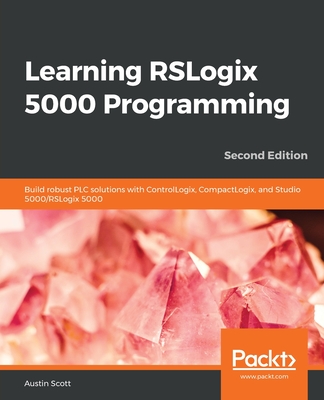買這商品的人也買了...
-
 C++ Primer, 3/e 中文版
C++ Primer, 3/e 中文版$980$774 -
 作業系統概念 (Operating System Concepts, 6/e Windows XP Update)
作業系統概念 (Operating System Concepts, 6/e Windows XP Update)$780$741 -
 $780CMMI: Guidelines for Process Integration and Product Improvement (Harcover)
$780CMMI: Guidelines for Process Integration and Product Improvement (Harcover) -
 ASP.NET 程式設計徹底研究
ASP.NET 程式設計徹底研究$590$466 -
 鳥哥的 Linux 私房菜-伺服器架設篇
鳥哥的 Linux 私房菜-伺服器架設篇$750$638 -
 鳥哥的 Linux 私房菜─基礎學習篇增訂版
鳥哥的 Linux 私房菜─基礎學習篇增訂版$560$476 -
 手機、PDA 程式設計入門─Java 手機、Pocket PC、Palm OS、Symbian OS 程式設計
手機、PDA 程式設計入門─Java 手機、Pocket PC、Palm OS、Symbian OS 程式設計$720$569 -
 CCNA Self-Study: Interconnecting Cisco Network Devices (ICND) 640-811, 640-801, 2/e
CCNA Self-Study: Interconnecting Cisco Network Devices (ICND) 640-811, 640-801, 2/e$2,360$2,242 -
 SCJP‧SCJD 專業認證指南 (Sun Certified Programmer & Developer for Java 2 #310-305 與310-027)
SCJP‧SCJD 專業認證指南 (Sun Certified Programmer & Developer for Java 2 #310-305 與310-027)$850$723 -
 Developing Series 60 Applications : A Guide for Symbian OS C++ Developers (Paperback)
Developing Series 60 Applications : A Guide for Symbian OS C++ Developers (Paperback)$2,190$2,081 -
 人月神話:軟體專案管理之道 (20 週年紀念版)(The Mythical Man-Month: Essays on Software Engineering, Anniversary Edition, 2/e)
人月神話:軟體專案管理之道 (20 週年紀念版)(The Mythical Man-Month: Essays on Software Engineering, Anniversary Edition, 2/e)$480$379 -
 JSP 2.0 技術手冊
JSP 2.0 技術手冊$750$593 -
 建構嵌入式 Linux 系統
建構嵌入式 Linux 系統$780$616 -
 CCNA 認證教戰手冊 Exam 640-801 (CCNA Cisco Certified Network Associate Study Guide, 4/e)
CCNA 認證教戰手冊 Exam 640-801 (CCNA Cisco Certified Network Associate Study Guide, 4/e)$780$663 -
 最新 JavaScript 完整語法參考辭典 第三版
最新 JavaScript 完整語法參考辭典 第三版$490$382 -
 Project 2003 徹底研究
Project 2003 徹底研究$690$538 -
 Word 排版藝術
Word 排版藝術$620$490 -
 $399Symbian OS C++ for Mobile Phones Volume 2 (Paperback)
$399Symbian OS C++ for Mobile Phones Volume 2 (Paperback) -
 Windows CE.NET 程式設計 (Programming Microsoft Windows CE .Net, 3/e)
Windows CE.NET 程式設計 (Programming Microsoft Windows CE .Net, 3/e)$890$703 -
 Linux 指令詳解辭典
Linux 指令詳解辭典$650$553 -
 ASP.NET 徹底研究進階技巧─高階技巧與控制項實作
ASP.NET 徹底研究進階技巧─高階技巧與控制項實作$650$507 -
 UML 精華第三版 : 標準物件模型語言 (UML Distilled, 3/e)
UML 精華第三版 : 標準物件模型語言 (UML Distilled, 3/e)$460$363 -
 CSS 網頁設計師手札 (The CSS Anthology 101 Essential Tips, Tricks & Hacks)
CSS 網頁設計師手札 (The CSS Anthology 101 Essential Tips, Tricks & Hacks)$450$383 -
 軟體測試理論與實作
軟體測試理論與實作$520$406 -
 Sniffer Pro 網路最佳化與故障排除手冊
Sniffer Pro 網路最佳化與故障排除手冊$580$452
商品描述
Description:
This book explains the key features of Symbian OS and will help you to write effective C++ code. It focuses on aspects of good C++ style that apply particularly to Symbian OS.
21 items are used to target particular aspects of the operating system and provide a simple and straightforward exploration of coding fundamentals. Using example code and descriptions of best practice to deconstruct Symbian OS, the items guide you to what you should and should not do (and why), pointing out commonly-made mistakes along the way.
Technologies covered include:
- client-server architecture
- descriptors and dynamic containers
- active objects, threads and processes
- leaves, cleanup stack and 2-phase construction
- thin templates, good API design, memory optimization, debug and test macros
- the ECOM plug-in framework
Symbian OS Explained can be read cover-to-cover or dipped into as a reference that will improve your code style when programming with Symbian OS.
Table of Contents:
Foreword.
About This Book.
Author Biography.
Author’s Acknowledgments.
Symbian Press Acknowledgments.
Innovation Through Openness.
Item 1: Class name conventions on Symbian OS.
Item 2: Leaves – Symbian OS Exceptions.
Item 3: The cleanup stack.
Item 4: Two-phase construction.
Item 5: Descriptors – Symbian OS strings.
Item 6: Good descriptor style.
Item 7: Dynamic arrays and buffers.
Item 8: Event-driven multitasking using active objects.
Item 9: Active objects under the hood.
Item 10: Symbian OS threads and processes.
Item 11: The client-server framework in theory.
Item 12: The client-server framework in practice.
Item 13: Binary types.
Item 14: ECOM.
Item 15: Panics.
Item 16: Bug detection using ASSERTs.
Item 17: Debug macros and test classes.
Item 18: Compatibility.
Item 19: Thin templates.
Item 20: Expose a comprehensive and comprehensible API.
Item 21: Good code style.
Appendices.
Bibliography.
Glossary.
Index.
商品描述(中文翻譯)
**書籍描述:**
本書解釋了 Symbian OS 的關鍵特性,並將幫助您撰寫有效的 C++ 代碼。它專注於特別適用於 Symbian OS 的良好 C++ 風格方面。
本書使用 21 個項目針對操作系統的特定方面,提供對編碼基礎的簡單明瞭的探索。通過示例代碼和最佳實踐的描述來解構 Symbian OS,這些項目指導您應該做什麼和不應該做什麼(以及為什麼),並指出常見的錯誤。
涵蓋的技術包括:
- 客戶端-伺服器架構
- 描述符和動態容器
- 活動物件、執行緒和進程
- leaves、清理堆疊和兩階段構造
- 輕量模板、良好的 API 設計、記憶體優化、除錯和測試宏
- ECOM 插件框架
《Symbian OS Explained》可以從頭到尾閱讀,也可以作為參考資料,幫助您在使用 Symbian OS 編程時改善代碼風格。
**目錄:**
前言
關於本書
作者簡介
作者致謝
Symbian Press 致謝
透過開放創新
項目 1:Symbian OS 的類名稱約定
項目 2:Leaves – Symbian OS 異常
項目 3:清理堆疊
項目 4:兩階段構造
項目 5:描述符 – Symbian OS 字串
項目 6:良好的描述符風格
項目 7:動態陣列和緩衝區
項目 8:使用活動物件的事件驅動多任務
項目 9:活動物件的內部運作
項目 10:Symbian OS 的執行緒和進程
項目 11:客戶端-伺服器框架的理論
項目 12:客戶端-伺服器框架的實踐
項目 13:二進位類型
項目 14:ECOM
項目 15:恐慌
項目 16:使用 ASSERT 進行錯誤檢測
項目 17:除錯宏和測試類
項目 18:相容性
項目 19:輕量模板
項目 20:提供全面且易於理解的 API
項目 21:良好的代碼風格
附錄
參考文獻
術語表
索引

















